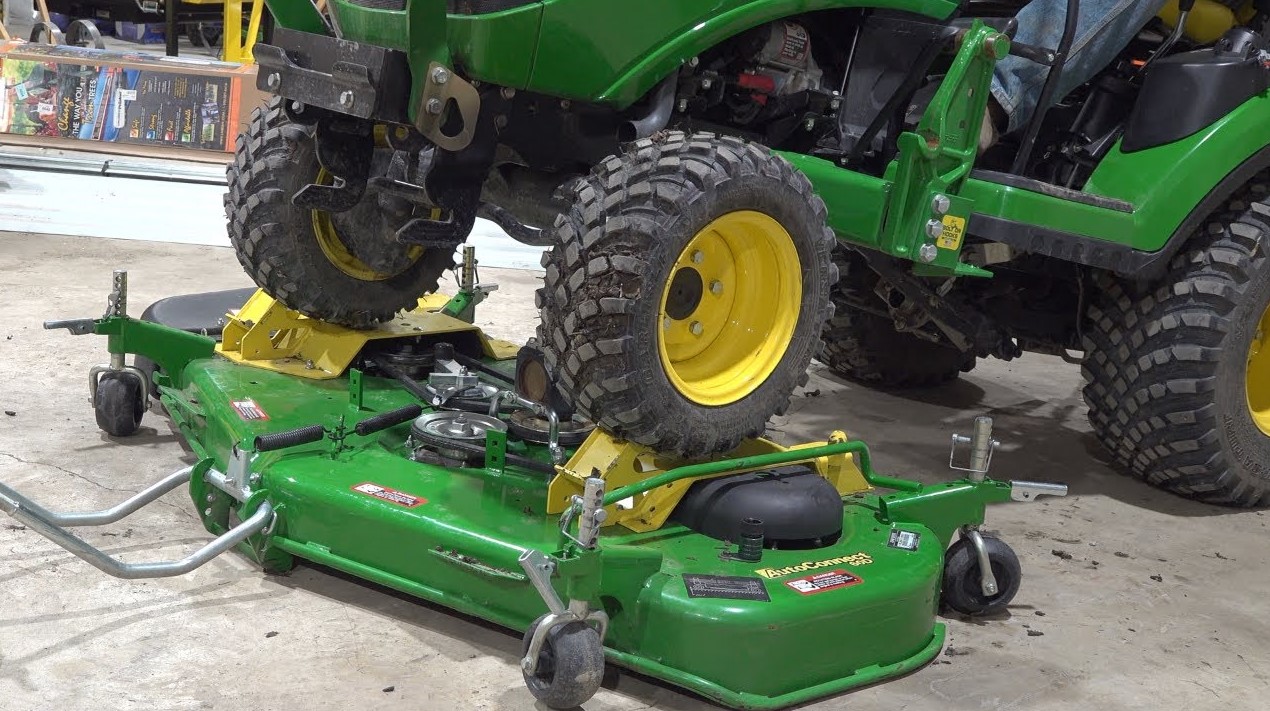Hi everyone,
It’s a gloomy, rainy day here in the Pocono Mountains, PA. With nothing better to do, I was tinkering around in the garage and decided to check the tire pressure on my 1025R, which I’ve only had for a little over a month.
According to the manual, the front tires should be at 22 PSI and the rear ones at 20 PSI, all measured cold. However, when I checked, the front tires were reading 30 PSI, while the rear tires were barely hitting 10 PSI. Strangely, the rear tires didn’t show any noticeable bulging.
Aside from that, everything else with the tractor has been working well, including the mowing quality, which I know can be affected by tire pressure.
I’m curious if anyone has an idea why my tire pressures are so far off from what’s recommended. While I could adjust them to the suggested levels, the mower deck might already be set for the current pressures, and since I’ve been getting good results cutting the lawn, I’m hesitant to change anything.
Also, are there any safety risks associated with these current pressure levels?
Just to rule out any faulty equipment, I used two different pressure gauges, both of which gave consistent readings across all the tires.
Any insights?
You didn’t mention whether you’re using a front-end loader (FEL) or if your tires have liquid ballast in them.
I don’t think there’s a major safety concern with the pressure readings you have. The front tires are definitely higher than recommended, so lowering them to the manual’s suggested PSI could help and might give you a smoother ride. I doubt adjusting the pressure will impact the deck leveling much.
The rear tires are a bit low, but from what I’ve seen on MTF, a lot of people run their rear tires below the suggested levels to make the ride more comfortable. I wouldn’t advise doing that if you’re using the FEL a lot or have a 650-pound ballast box on the back, but for just mowing, it shouldn’t be a problem.
If your rear tires are filled with liquid ballast, it’s typical to use lower pressure. Someone else might chime in on that, but if you do have ballast, remember to check tire pressure with the valve in the 12-o’clock position.
By the way, yes, I am using the H120 front-end loader (FEL), but there’s no liquid ballast in the tires. However, I did have a 600 lb ballast box attached to the 3-point hitch when I checked the tire pressures. I don’t mow with the FEL or the ballast box on.
I decided to reach out to the dealer to ask why they set the pressures the way they did, as it seemed intentional since the readings were consistent on both sides.
I spoke with the dealer, and they explained that they typically inflate the front tires 4 to 6 PSI above the recommended 22 PSI when an FEL is attached. My front tires were at 30 PSI, which is a bit higher than their usual range, but not a huge deal.
As for the rear tires, they intentionally underinflate them for a softer ride and better traction with the FEL in use.
Also, the H120 owner’s manual mentions inflating the front tires 4 PSI higher than the recommended level when the FEL is attached to the tractor.
Most tractors only have seat suspension, so driving over rough terrain with tires at high pressure can make for an uncomfortable experience, even if you have an air ride seat. While your seat might cushion you, your hands and feet on the controls will feel every bump and jolt. Adding liquid ballast to the tires makes the ride even rougher because it reduces the amount of air in the tires.
This brings up a point: when tires are filled with liquid ballast, the air valve ends up below the fluid level. To avoid getting fluid into the pressure gauge, it’s important to rotate the tire so the valve is at the 12 o’clock position, assuming the tire is less than 55% filled. Most people who add ballast aim for the maximum fill level, which is 75%. At that level, the fluid sits a few inches higher than the valve, even when it’s at the top position. You can see this if you look closely on a damp morning, where the fluid line sits just above the rim.

